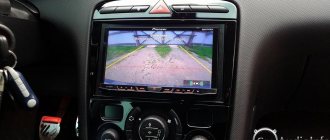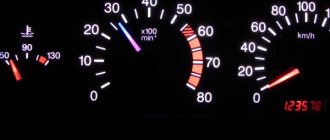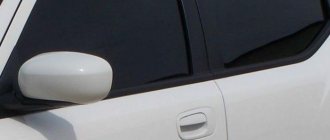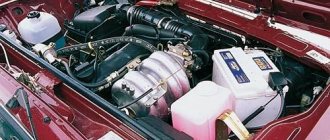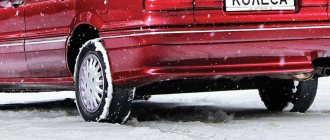There is a lot of debate online about whether a tube is installed in a tubeless tire and what the consequences of repair are. Some users claim that in this case the car behaves unpredictably. Others insist that the repair method is acceptable. Experts are also divided into two camps. On the one hand, installing such a wheel will cause damage to the car. Opponents don't see anything wrong.
Before drawing conclusions and making a decision, it is necessary to carefully weigh all the advantages and disadvantages of the procedure.
Installing a camera in a tubeless tire: pros and cons
The procedure has clear pros and cons that indicate the feasibility of repair. Advantages.
- If a tire goes flat due to an uneven rim edge or sand at the joint, the tube will maintain pressure normally.
- If the seal of the cylinder is broken (cracks in the discs, pores or punctures that do not heal), an additional rubber cylinder will hold the air inside.
- Riding on such a design is more comfortable than on a dokatka. This makes it possible to use it as a spare tire.
Flaws.
- Tubeless rims are designed for wide nipples. When installing the camera, you need to mount an additional insert or the nipple will tear out.
- The unsprung weight of the vehicle increases. The additional weight of the wheel negatively affects the durability of the bearings, arms and ball joints. Shock absorbers also wear out faster.
- The inner part of the tubeless is characterized by a reduced cylinder size. Due to the limited space, the camera does not expand completely. There are also ribbed parts here. The inserts rub the surface of the camera.
- Air-filled cavities form between the tire body and the tube. Bubbles migrate, which throws off the balance and interferes with the car's handling. The result is uneven wear and possible vibrations in the steering wheel.
- Possibility of disassembly when entering turns at high speeds.
Thus, as an emergency option, the method is suitable for carefully covering 100-200 km. With constant use, it is recommended to change the wheel.
My experience
Guys, I also dealt with such tuning of a tubeless wheel, I also installed a camera in a tubeless wheel, it was because I was young, I didn’t have enough money, and the disc was not fresh. In general, the camera was installed on the rear wheel, originally it was the front, but I decided to rearrange it so that if the car bursts, it wouldn’t skid. I kept it in the rear wheel for about two seasons, but I used the car 95% of the time only in the city, and did not develop high speeds on the highway. Indeed, the wheel was poorly balanced, for some reason the balance was off, but it still achieved intelligible indicators for moving at low speeds.
After two seasons, it really seemed to me that the tire was not worn evenly, so I bought new wheels, regular stamping, and new tubeless tires.
Actually, my statement of facts is that you can drive, BUT BE VERY CAREFUL! If you often travel at high speeds (on the highway), then personally I would replace the wheel completely. Ideally, you can throw it on the spare tire, that’s where the wheel belongs. It is generally prohibited to place it on the front axle, because you don’t know what to expect from this wheel. And yes, after a couple of seasons, and maybe even after one (if the mileage is high), the tire will wear out, and not evenly, you won’t be able to get away from it.
Installing a camera in a tire yourself
Self-installation in a tubeless camera is done like this.
- Disassemble the old set.
- Remove the nipple from the socket.
- From inside the tire, remove all inserts, stickers and elements that could damage the rubber.
- Fill the camera into the cylinder.
- Secure the nipple from falling through.
- Seal the wheel.
To eliminate the air bubble, some experts recommend slowly inflating the slope and at the same time lowering the nipple slightly into the socket.
The technique is relevant for all wheels, regardless of size, be it 14, 15 or r16.
Is it possible to put a tube in a tubeless tire on a cast wheel?
Installing a camera in a modern cylinder on an alloy wheel is unacceptable. The exception is the need for short-term rolling within 200 km. or use as a spare tire.
The need may be caused by damage to the rim or tire itself. The leak is corrected by inserting an independent pressure-holding cylinder.
Is it possible to put a tube in a tubeless tire with a side cut?
While receiving a side cut, some motorists place their tubeless tubes inside and continue driving. Whether it is possible to repair rubber in this way depends on the case.
If the slot is wide, the chamber can be squeezed out by internal pressure. This may cause the wheel to explode while driving. Simultaneously with the application of the “fur coat” - the reinforcing element, the operation of the cameras is possible.
Installing a tubeless tire on a regular rim
Modern discs are equipped with special annular protrusions - humps. The parts are designed to hold the tire cord pressed.
If the tire continues to be used, due to the absence of a retaining element, it will quickly be torn off its seat.
Will a camera help if there is a hernia on the wheel?
The formation of a hernia on a tire indicates damage to the inner layer of the cord. If the fabric or metal base is destroyed, further use of the product is strictly not recommended.
The same applies to installing a camera in a damaged tire. The additional insert does not have a reinforcing layer. The soft camera stretches greatly, which makes its installation useless.
Constantly flat tire, nothing helps: what to do
Typically, tubeless tires can go flat in three ways.
- Damage to the internal sealing layer. Each tire has a special soft layer on the underside. When the slope is punctured, the layer quickly heals the damage, which minimizes air loss.
- Damage to the sealing rim on the slope or the edge of the rim. The main sealing element is the joint between the tire and the wheel. When the wheels hit, the edges often bend, which leads to depressurization of the joint.
- The age of the discs plays an important role. Peeling or cracking paint also allows air to leak.
If there are no obvious punctures, you should pay attention to the above factors or install a regular camera inside.
It goes down, nothing can be done
However, there are times when a tubeless tire goes flat, and no matter what you do, it won’t stop!
This mainly occurs due to damage to the wheel rim. Let's say you flew into a hole and dented a (stamped) disc, they straightened it out for you, but some unevenness may remain, the tire will not fit tightly and will leak air, albeit not quickly, but the next day minus 0.3 atmospheres, possibly more.
With cast and forged wheels it is even more difficult; if you fall into a hole, they can simply burst, or microcracks will appear through which the wheel will go flat. Of course, it is possible to straighten and solder them, but it is difficult and not always worth doing, because the structure of the disk is damaged (if the damage is serious), more details here .
It could also be a problem with the paint on the disc. The thing is that the varnish and paint can come off over time, swell, and again the tire does not fit tightly to the wheel. A flat tire seems trivial, but this is a common problem on used alloy wheels! They need to be cleaned and painted correctly .
Of course, the damage to the tire itself should not be written off; with strong impacts it can break (the cord itself breaks), there is no use installing any tubes here, the tire needs to be completely replaced.
There are also trivial reasons, for example, dirt (or sand) at the tire fitting where the tire is attached to the rim. Here you just need to clean the contact area.
How to install a valve for tubeless tires
The standard procedure for installing a tubeless nipple on a wheel involves the use of a special device.
The photo shows the nipple key of the jtc 3926 model:
The procedure looks like this:
- unscrew the valve from the new nipple;
- insert it from the inside of the disk;
- install the support device;
- Using the key as a lever, pull the nipple through the hole in the rim.
If everything is done correctly, the spool will fall into place and air will be etched from the contact point.
Renault Logan 2008, 75 l. With. - tires
Cars for sale
Renault Logan, 2013
Renault Logan, 2010
Renault Logan, 2012
Renault Logan, 2011
Comments 29
How are you then? Closed the season and that's it? I’m also thinking about taking the camera until spring (((
Guys, thank you all for your attention. Today is the third day I've been riding the camera, and so far nothing has gone wrong. You need to stop by to measure your blood pressure, and maybe everything will be as it should
You can’t put tubes on tubeless tires at all, and if they did it for you at a tire shop, then it’s a crappy tire shop. A tubeless tire does not have special recesses or a valve hole in the wheel rim from the inside, as a result of which an air blister inevitably forms between the tire and the tube, which during driving becomes a source of sudden local overheating and, at best, the tube will burst, at worst, it will “explode” wheel.
They told me that I could finish the season on it. Because there is no money to buy a new wheel. But sometimes you need to travel
1. not related. 2. safe. 3 it’s not. It turned around most likely due to hitting a slippery sloping shoulder, the difference in the rotation of the front wheels was a little on the gas and the result.
One of the versions is that I was turned around because there was an ice track on that straight line and I jumped out of it. And I neither braked nor accelerated. I kept an average speed of 40 km/h
How to switch to tubeless
Option 1. Tubeless-Ready wheels and tires
Tubeless tires and rims are marked with special inscriptions such as “UST” (Universal System Tubeless) or TR (tubeless ready), or “Tubeless compatible”. These are slightly different standards, but the essence is the same for all.
USTs are a little easier to install and due to the specific design of the tire beads and special rims, they are very sealed and require less sealant. However, the tires themselves are slightly heavier than conventional ones, which is one of the reasons for the development of alternative standards.
Many top-end bicycles from good manufacturers already come with tubeless rims as stock; don’t be lazy to double-check this so as not to spend extra money.
Option 2. Convert your rims to tubeless
Almost any rim can be converted to tubeless using a special kit. You will need sealant, rim tape and a special nipple.
Tubeless Installation Tips
Go easy on the edits . Mounts, especially metal ones, can damage the rim flange, leading to air leaks. If you use them, do it gently and measuredly. You can help the tire fit onto the rim using a soapy water solution.
Hernia on the wheel, will a camera help?
What I definitely wouldn’t do is repair a hernia, or what’s also called a “bump,” with a chamber!
We talked about why it comes out, in short, the lower metal and fabric cord of the wheel, which holds the rubber, breaks and the pressure simply bursts the tire in this situation. THIS MEANS SHE CAN BREAK OUT AT ANY MOMENT! And believe me, you can’t do anything with a camera - 100%! If the lump bursts, the chamber will burst immediately, it will not be able to withstand the pressure inside, because it does not have reinforcing elements - IT WILL BURST LIKE A BALL.
During the operation of a car, it happens that a tubeless tire can no longer be used in normal mode, but in general its condition still allows for further use, but with the use of a pneumatic tube.
There is nothing special about this, just a tube is placed inside the tire, then everything is mounted on the rim and you can continue to use the wheel. But the main advantage of a tubeless tire is that there will be no more air trapped inside after a puncture. Any damage to the tube will cause air to leak out of it, seep around the rim and exit through the valve hole in the rim, which is not sealed on tubed tires.
But there is a way to restore the main advantage of a tubeless tire, even if it is already used together with a pneumatic tube. To do this, it is necessary to slightly rework the camera itself.
To do this, cut off the valve from the chamber so that a rubber bead 2-3 mm high remains.
Valve cut diagram: 1 – pneumatic chamber; 2 — cut off part of the valve;
Then we carefully clean the resulting cut with a file or sandpaper, so that the flow completely disappears and a flat surface with a hole is formed - a tide.
We stretch the hole a little with our hands and install a valve from a tubeless tire into it, which was previously used on the same wheel. Next, you will need a textolite or fluoroplastic washer, the thickness of which should be 0.8-1.0 mm. It is important that the edges of the washer are rounded.
Then, holding the installed valve from turning, we tighten its head with a nut, the thickness of which should be no more than 3.0 mm. Next, we put a stepped rubber bushing on the valve, after which we insert the valve together with it into the hole in the rim, and tighten everything with a nut, having previously put on the rubber and steel washers.
Before installing the tube, the tire, as well as the rim, must be completely cleaned of dirt and debris, and then evenly applied with talcum powder.
